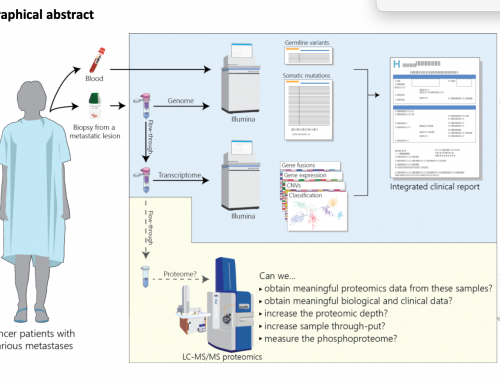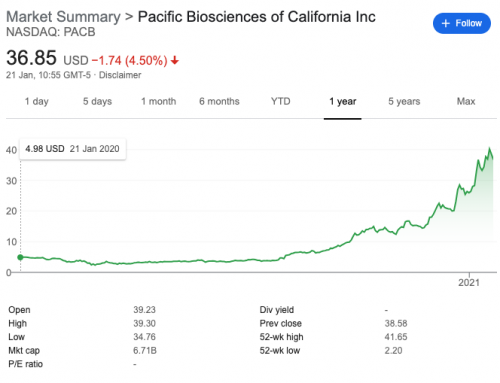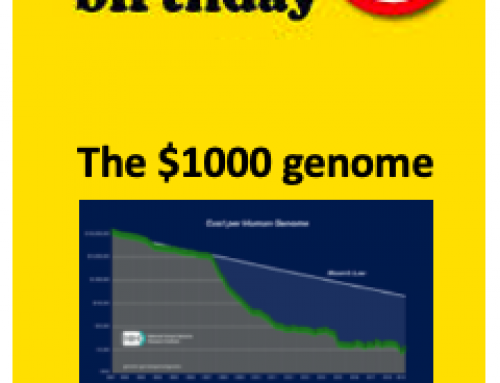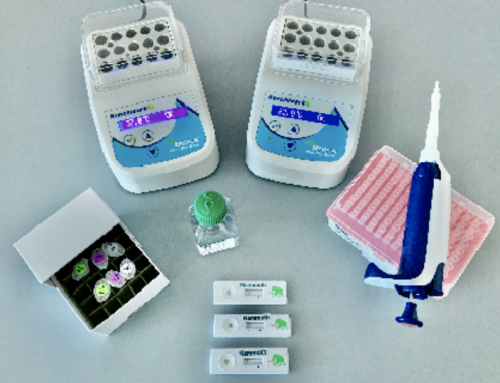I’m a little late getting this list of books that I think will make great Christmas presents published here, but you can always pick them up in the January sales! All five are available from WHSmith – the most ethical of the UK’s highstreet bookshops (or your local charity shop of course).
“Five brilliant books for Christmas recommended by @coregenomics”
The top 5 christmas books as recommended by me:
- The Breakthrough by Charles Graeber (WHSmith.uk, Amazon.com)
- When breath becomes air by Paul Kalanithi (WHSmith.uk, Amazon.com)
- Do No Harm: Stories of Life, Death and Brain Surgery by Henry Marsh (WHSmith.uk, Amazon.com)
- The Epigenetics Revolution by Nessa Carey (WHSmith.uk, Amazon.com)
- Notes from a small island by Bill Bryson (WHSmith.uk, Amazon.com)
#1 The Breakthrough:
 This is a fantastic book and so timely for anyone working in Cancer medicine or biology. The field of immunotherapy (IO) is old, much older than I realised, and is finally getting the successes and recognition it deserves. Immunotherapy’s story is one of knowledge; a long and winding path of biological discovery and finally an understanding of how the immune system works and how cancer evades it. Our understanding is still in it’s infancy, or maybe its early teens, and as we get to grips with the complexities of immune cells and their interaction with each other and our tumours, we’ll hopefully see profound leaps in cancer survival rates. Whether IO will be the “cure” that so many people hope for remains to be seen. Bt it is certainly resulting in what would have seemed like miraculous cures in some patients, and is changing the course of some diseases.
This is a fantastic book and so timely for anyone working in Cancer medicine or biology. The field of immunotherapy (IO) is old, much older than I realised, and is finally getting the successes and recognition it deserves. Immunotherapy’s story is one of knowledge; a long and winding path of biological discovery and finally an understanding of how the immune system works and how cancer evades it. Our understanding is still in it’s infancy, or maybe its early teens, and as we get to grips with the complexities of immune cells and their interaction with each other and our tumours, we’ll hopefully see profound leaps in cancer survival rates. Whether IO will be the “cure” that so many people hope for remains to be seen. Bt it is certainly resulting in what would have seemed like miraculous cures in some patients, and is changing the course of some diseases.
Miraculous is a word I try to avoid using. I am not a believer in any God (not since my late teens anyway) and the word carries a lot of religious baggage. However the immune systems ability to cure cancer has a long association with miracles and Graeber suggests that St Peregrine (patron saint of cancer patients) may have been cured by a bacterial infection so bad that it gave off “a horrible stench that could [not] be endured”. Intriguingly the 1974 article that discusses St Peregrine’s disease mention s that his corpse was analysed in 1959 – could we apply Kennewick man analytical techniques to investigate this tumour:normal pair?
Immunotherapy is beginning to change the face of cancer medicine – the checkpoint inhibitors are just a few of the over 1000 immunotherapeutic drugs in preclinical testing or clinical trials. These offer real hope to progress from today’s cancer medicine; described by Graeber as: cut (surgery), burn (radiation) or poison (chemotherapy); and to begin to offer immunotherapy – “unleash”.
The book starts at MSKCC in 1891 with Dr William Coley and two of his patients; Elizabeth “Bessie” Dashiell and Mr Zola. Coley was inspired by the medical history of Fred Stein. Stein was an MSKCC sarcoma patient who, after operative therapy and relapse, was infected with Streptococcus pyogenes and appeared to have a complete relapse of his cancer. Coley deduced that cancer patients who had virulent bacterial infections appeared to be spontaneously cured by stimulation of the immune system. He published “The treatment of malignant tumors by repeated inoculations of Erysipelas, with a report of ten original cases” in 1893 and describes “Coley’s toxins” a cocktail of bacterial proteins for the treatment of cancer. Soon after radiotherapy made its debut and bacterial therapy fell out of favour.
In the late 60’s and early 70’s immunotherapy was put back on the map with the work of Steven Rosenberg, also pursuing an understanding of a patients miraculous survival of metastatic stomach cancer. This work kicked off modern immuno-oncology research and the book describes much of what has happened over the past few decades, a lot of the significant advances coming in the last 10-15 years. The basic premise of immunotherapy is that cancer evades the immune system by signalling that it (the tumour) is “self” and should not be targeted for elimination, and that therapies can be developed that block this evasion. It was this therapeutic development that J.Allison and T.Honju received the 2018 Nobel Prize in Physiology and Medicine. In the last forty years scientists and clinicians have developed a clearer understanding of how the immune system works, how cancer evades it and how it can be turned back on with phenomenal therapeutic benefit.
#2 When breath becomes air:
 #spolieralert Dr Kalanithi dies at the end. This book was written byDr Paul Kalanithi, a young neurosurgeon facing terminal cancer, during the last two years of his life at the age of just 37. The account of his fight against cancer, and the inevitable end, is one of the best written books I’ve ever read. This is very likely because he studied English literature at Stanford University before embarking on his medical training as a neurosurgeon; and so he writes about medicine, and death, with such beautifully emotive English: he was a gifted writer.
#spolieralert Dr Kalanithi dies at the end. This book was written byDr Paul Kalanithi, a young neurosurgeon facing terminal cancer, during the last two years of his life at the age of just 37. The account of his fight against cancer, and the inevitable end, is one of the best written books I’ve ever read. This is very likely because he studied English literature at Stanford University before embarking on his medical training as a neurosurgeon; and so he writes about medicine, and death, with such beautifully emotive English: he was a gifted writer.
The story is incredibly intimate. You feel as though you too are on the journey from nearly Doctor to terminal patient.The book is almost meditative on the meaning of life and death as Kalanithi recounts the experiences of his terminal lung disease from the perspective of patient, doctor, husband and father. What would the course of his disease look like today, or in just ten years time? The immunotherapy described in The Breakthrough may just have given Kalanithi time to complete this book and see his daughter go to school, and maybe even graduate from college.
#3 Do no harm : Stories of Life, Death and Brain Surgery
 I read some of Prof Marsh’s Do No Harm on a Ryanair flight to Spain for my Sumer holidays. At one point my wife asked if I was OK as tears were running down my face. I was, but the book was recounting the story of someone who was not – Marsh’s writing is likely to leave you in tears once or twice. The book tells the life story of Professor Henry Marsh, through his time at medical school, and through case notes from his life as a neurosurgeon.
I read some of Prof Marsh’s Do No Harm on a Ryanair flight to Spain for my Sumer holidays. At one point my wife asked if I was OK as tears were running down my face. I was, but the book was recounting the story of someone who was not – Marsh’s writing is likely to leave you in tears once or twice. The book tells the life story of Professor Henry Marsh, through his time at medical school, and through case notes from his life as a neurosurgeon.
Each chapter recounts a case history. But Marsh does not deliver bland technical writing, instead he writes beautifully and sensitively, about the details of surgical procedure, the mundanity of life as a medical student, the challenges of the modern NHS; but most of all about the impact of his day-to-day work on the lives of patients and their families. Nearly all of the patients are in for a tough time, and many die. However, the book does not dwell on the macabre and most of the chapters left me thinking how lucky I was that my family was unafflicted by the medical conditions described.
Unfortunately about a year after reading Marsh’s book my wife had a subarachnoid haemorrhage. She sat down one evening and suddenly grabbed the back of her head in pain. It was the classical “cricket bat to the head” pain that suggests a bleed on the brain, but A&E missed it and we sat for four hours till midnight. At 1am my wife was told she’d not be scanned till morning so I took the kids home for the night. At 3am she phoned me from A&E to say they’d discovered a bleed on the brain. At 7am she phoned from an ambulance bombing along the A11 with lights and sirens blazing whisking her to Addenbrookes. When she awoke up at 10am the person to her left had just come back from surgery with a scar running across her forehead! Everything else that happened that week was slow, tedious and painful. After a couple of scans (medical imaging of the brain with a contrast agent is the worst thing my wife has gone through in hospital – and she’s had two kids as a diabetic) and a week on the neurology ward my wife was diagnosed with the kind of brain bleed you want to be diagnosed with and she is now considered baseline risk for this happening again. The week went slowly for me as Marsh’s book reverberated around my head – I said nothing to my wife and she’s never read this one.
#4 The Epigenetics revolution:
 Nessa Carey’s book tells the story of DNA. This is not the DNA of the Human Genome Project, often described as the recipe book for life; epigenetics is more like your Dad’s instructions for making spaghetti bolognese – all the instructions are there to be read, but hidden beneath the surface is critical information you’ll be lost without.
Nessa Carey’s book tells the story of DNA. This is not the DNA of the Human Genome Project, often described as the recipe book for life; epigenetics is more like your Dad’s instructions for making spaghetti bolognese – all the instructions are there to be read, but hidden beneath the surface is critical information you’ll be lost without.
This is a book written at a level that could make it a challenging read for a non-biology graduate. Most people are familiar with the term DNA and its 1953 “discoverer’s” Watson and Crick. However, many fewer people are aware of the role chemical modifications in DNA play in biology, or have heard of major protagonists like John Gurdon (only a little older than the field he, to some degree, invented). Carey cannot avoid using gene names and has to introduce some pretty complicated science, which some readers may struggle with (the science can be confusing to many scientists too). It does provide a historical tour of the epigenetics field and is a great introduction to the field.
Epigenetic modification of DNA is also hot on my list of diagnostics technologies for 2019. Some recent advances have really shone the light onto the utility of circulating cell-free methylated or 5-hydroxymethylated DNA as a biomarker for disease. The technology may also enable early detection of disease, as mC or 5hmC signals come from disease tissue, and the tissue surrounding it, increasing the amount of detectable DNA in blood.
#5 Notes from a small island:
 I’ve included one of Bill Bryson’s books here as it is one I’ve recommended to several non-English colleagues as a window on the UK. I like Bryson’s writing, but was a relative latecomer to his work. This may be why I like his writing so much, it fits better with my age and outlook than it would have done when I was in my 20’s or 30s.
I’ve included one of Bill Bryson’s books here as it is one I’ve recommended to several non-English colleagues as a window on the UK. I like Bryson’s writing, but was a relative latecomer to his work. This may be why I like his writing so much, it fits better with my age and outlook than it would have done when I was in my 20’s or 30s.
In the book Bryson recounts his travelling around the UK and his life over 20 years as a UK resident journalist (and Wymondham resident). He writes with real humour as he recounts the wonderful and the awful, the sublime and the ridiculous. He rants often (I like these bits) primarily about terrible hotels, town planning, the National Trust, and the lack of concern many English show for the prodigious number of ancient buildings. The book made me laugh out loud on many occasions and is an account of Great Britain for British and non-British alike. He can be supremely critical of a place, but leave the reader wanting to visit to prove him right or wrong. If you are new to the UK and looking for inspiration on where to visit then Bryson’s book (and the more recent sequel “The road to Little Dribbling”) is something different from the standard guide book.








Leave A Comment